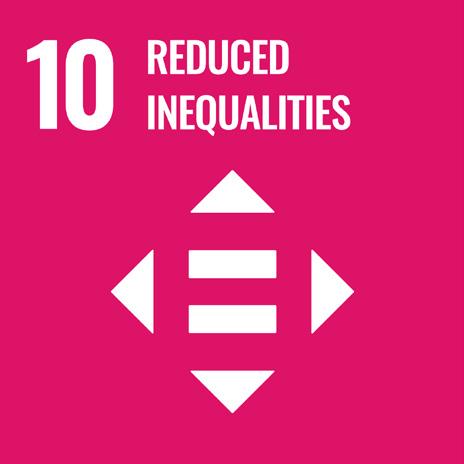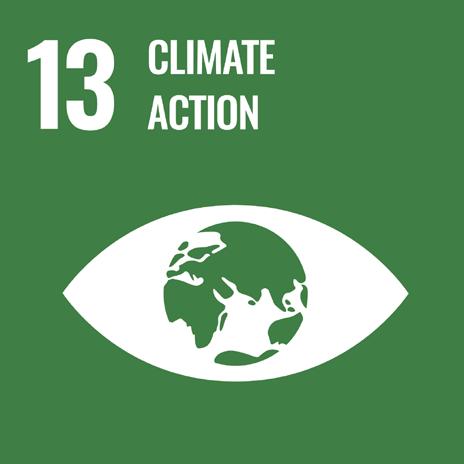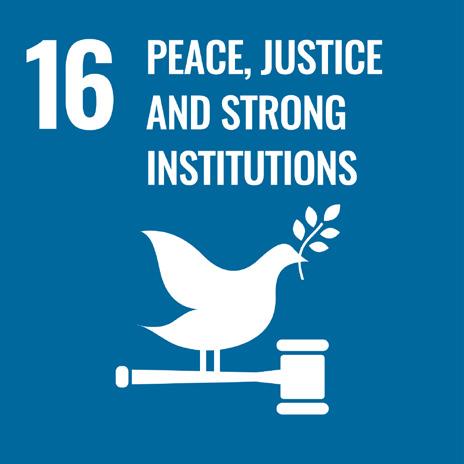General Certification Program



Thank you for deciding to include Choose Earth as part of your WorldStrides experience! Our hope is that through the Certificate, Program Leaders and their participants will acquire practical and useful sustainable skills they can not only employ while with WorldStrides, but can take those skills back into their communities.
For this Choose Earth Certificate, the focus is on the general idea and concepts behind sustainability. This program is ideal for programs who may not have access or the ability to engage in a specific sustainable initiative, or is a program that is completed unrelated to sustainability, but would like to learn more about the topic and incorporate its concepts while with program participants. There are three key aspects as the program lead you will take your participants through while on your trip:
• Focus area curriculum and learning
• Completion of an associated eco-challenge
• Facilitation of a group reflection
The Choose Earth focus area curriculum and learning will include a brief introduction of the UN Sustainable Development Goals (SDGs) that are most generally associated with Sustainability. There are instructor materials that we suggest all program leads read through so they can become knowledgeable on the UN Sustainable Development Goals and Choose Earth. Following, there will be the learning tools that Program Facilitators will share with students including an activity that will visually demonstrate this environmental problem leading to the materials for the group’s ecochallenge.
If throughout the Choose Earth journey Program Leaders experience any issues or questions, reach out to the Corporate Social Responsibility (CSR) Team at WorldStrides at csr@worldstrides.com.
Choose Earth is designed to be a seamless addition to your program. There are 4 key elements:
• Presenting the instructional materials assigned to your focus area.
• Program Facilitators lead group through an eco-challenge.
• Facilitate a group discussion.
• Submit information of participants to WorldStrides so each individual can receive their digital certificate.
Each Certificate program has an introductory video to the UN Sustainable Development Goals. Once shown Program Leaders will facilitate a discussion with participants about the SDGs.
There will be another video that demonstrates the Certificate’s chosen focus are in context with drafted questions to prompt the group to discuss.
*Videos and Discussion should take place prior to the eco-challenge.
Faculty will be responsible for sharing the Choose Earth slides and all content within them with their students. This is imperative so participants understand the program and satisfy the curriculum component of their certificate.
Program leads will host a debrief with their students after completion of the eco-challenge while on program.
Post-program, faculty will need to confirm that all certificate requirements were met, so that the CSR Team can distribute the digital certificates from Accredible.
How should Program Leaders notify WorldStrides when your group has completed the program?
• Program Leaders/ Facilitators can visit forms.office.com/r/Q3VvrsQd5y or scan the code on the last page of this booklet to fill out our smart form, letting us know the names and emails of each participant who has completed the program.
• A member of the Corporate Social Responsibility Team will then distribute the Certificates through email.
What happens if I don’t receive my certificate?
Participants should check their junk and spam folders for the Certificate. If participants have not received their certificate, email the CSR team at csr@worldstrides.com.
When should my participants expect their Choose Earth Certificate?
After Program Leaders/Facilitators submit the Microsoftt form, participants should expect their Certificate in their inboxes in 7 business days.
Is there a cost to participate in this certificate program?
No cost! This is an opt-in experience for all WorldStrides participants! We appreciate each program that decides to Choose Earth.
Do all certificates need to be completed by the end of the program?
This will be up to the faculty to decide. While the completion of the eco-challenge will take place during the program, the reflection discussion and social media post can occur post-program, but these must be confirmed before badges will be distributed.
For any area that discussion is required, there is a list of curated questions for the Program Leader/Facilitator.
PART 1
Program Leaders will find age-recommended slides that discuss what the SDGs are, their background, and history. Instructors should choose one of the three videos to play for their participants.
PART 2
Instructors will then choose one of two activities to lead their participants through the discuss the SDGs in more detail.
**Instructors leading a program for K-5 students may choose to opt-out of this portion of the program if determined the content extends beyond student’s comprehension levels.
Following are a number of Sustainable Development Goals that align with topics covered in this Choose Earth Certificate. Program Leaders should read through these goals so they are better equipped to engage and facilitate conversation with their participants.
For more information, visit the UN SDG website: sdgs.un.org/goals
During discussion, pay attention to see if a participants brings up the importance of education and learning about Sustainability. Maybe they are talking about access to education, the importance of having trained educators, or equal opportunity to education, Program Leaders can bring up this goal to supplement and add to that discussion and provide additional support by incorporating this SDG.
• 4.1: Ensure that all girls and boys complete free, equitable and quality primary and secondary education leading to relevant and effective learning outcomes.
• 4.6: By 2030, ensure that all youth and a substantial proportion of adults, both men and women, achieve literacy and numeracy.
• 4.a: Build and upgrade education facilities that are child, disability and gender sensitive and provide safe, non-violent, inclusive and effective learning environments for all.
• 4.c: Increase the supply of qualified teachers in developing countries.
Ensure inclusive and equitable quality education and promote lifelong learning opportunities for all Reduce


During your activities and discussions, are students bringing up social inequalities between race, class, or even religion? Program Leaders can ask participants how some of these social factors may impact an individual’s proximity to green spaces or negative environmental impacts like pollution. To shed light onto this topic, bring up the importance of bringing all groups to the table to discuss sustainability initiatives and what kind of positive impact that would have on the planet.
• 10.1: By 2030, progressively achieve and sustain income growth of the bottom 40% of the population at a rate higher than the national average.
• 10.2: To empower and promote the social, economic, and political inclusion of all, irrespective of age, sec, disability, race, ethnicity, origin, religion, or economic status.
• 10.6: Ensure enhanced representation and voice for developing countries in decision-making in global, international, economic, and financial institutions to deliver accountable and legitimate solutions.
Our window to avoid climate catastrophe is closing rapidly. The most noteable forms of climate degradation are natural disasters and temperature rise. Program Leaders can prompt students to list where they’ve seen most of these disasters and what it would take to prevent more from occurring. Go into detail about the UN Framework on Climate Change; what could those resources, if properly allocate build, or what kinds of solutions could we create?
• 13.1: Strengthen resilience and adaptive capacity to climate-related hazards and natural disasters in all countries.
• 13.2: Integrate climate change measures into national policies, strategies and planning.

• 13.a: Implement the UN Framework Convention on Climate Change mobilizing $100 billion annually to address the needs of developing countries.
Promote peaceful and inclusive societies for sustainable development, provide access to justice for all and build effective, accountable and inclusive institutions at all levels

It can be useful to bring up what role our governing bodies and institutions play in sustainability and sustainable development. Program Leaders can prompt participants to think about what kind of accountability these bodies should have to individuals and communities. What would that kind of accountability look like? Participants can also strategize and discuss ways to bring leaders of developing counties to the table.
IMPORTANT TARGETS
• 16.6: Develop effective, accountable and transparent institutions at all levels.
• 16.8: Broaden and strengthen the participation of developing countries in the institutions of global governance.
• 16.b: Promote and enforce non-discriminatory laws an policies for sustainable development.
www.un.org/sustainabledevelopment
Set by the United Nations in 2015 as a part of the 2030 Agenda for Sustainable Development are 17 goals adopted by all 193 member states. These goals address various global issues, such as poverty, hunger, equality, climate change and environmental sustainability. To learn more, click below by age group and see what you can do to better understand and support these goals.
 K - 4TH GRADE
5TH - 8TH GRADE
9TH - 12TH GRADE
K - 4TH GRADE
5TH - 8TH GRADE
9TH - 12TH GRADE

Program Leaders have two options to choose from to facilitate a discussion around the Sustainable Development Goals: including tools, practices, and implementations needed to build a more sustainable world.
Option 1: Group Lead Discussion Approx. Time (10-15 minutes)
Option 2: Small Group Activity with Discussion Approx. Time (20-30 minutes)
The role as a facilitator is to guide participants through the chosen activity by talking through the questions provided. Be sure to engage all participants and refer back to the Relevant SDGs on the previous pages to dig deeper into topics and points participants may be more interested in.

After watching the video briefly discuss, which goals may have already achieved, which ones are achievable, and which goals seem out of reach.
Continue to the next section of the group’s chosen activity.
1. What does sustainability mean to you?
2. What are the positive impacts of climate action?
3. After watching the video on the Sustainable Development Goals, do they seem reasonable or attainable? Why or why not? Are there some that seem more achievable?
4. Where have you witnessed the negative consequences of environmental degradation in your everyday life?
• Environmental Degradation: the deterioration of the environment through depletion of resources such as air, water, and soil; also known as the destruction of ecosystems and the extinction of wildlife.
• In your neighborhoods
• In your communities and local governments
• In your countries, national government
• In the world
5. What role do smaller communities have in helping the planet meet its sustainability goals? (think local governments, neighborhoods, schools)
6. What responsibilities should countries share to attain a sustainable earth?
7. How could some of these targets become a reality in your community?
• Divide your group up in equal parts and assigned each group to a Sustainable Development Goal. (Program Leaders can use the goals referenced in facilitator guide)
• Whether on large poster paper on a sheet of paper, tell each group to divide their paper into 4 squares. Have them answer the following questions in each quadrant:
• In your own words, explain what their Sustainable Development goal is and why this goal is related to building a Sustainable World.
• Which “targets” seem the most attainable and why?
• How can you incorporate this goal into your daily habits and routines?
• Come up with one additional goal to add to the SDG we should consider to make this goal more inclusive to other communities, countries, and culture.
• After 10 minutes, bring the group back together and have each small group present their poster.
• Following all of the groups sharing, Program Leaders should conclude with a general question about what participants learned from the activity.

An eco-challenge is your way to practice and incorporate sustainability during your time on the program. Be creative! Your eco-challenge can be one all-encompassing event or you can challenge yourself to continue your sustainable habit over an extended period of time!
The goal of an eco-challenge is to demonstrate the importance and feasibility of incorporating sustainability into your daily lives. Challenge yourselves with your eco-challenge and be sure to take some photos!
On the next page you will find a list of pre-approved eco-challenges that are associated with reducing waste. If you don’t see one you like, you can get creative and brainstorm your own! All participants must complete their eco-challenge with their program leader to be eligible for the Choose Earth Certificate.
Snap some photos and share your favorite moments from the eco-challenge on social media using #ChooseEarth, and be sure to tag WorldStrides.
• Complete a on-program service learning opportunity that is already part of your itinerary.
• Embrace the recycling motto: Reduce, Reuse, Recycle: make a conscious effort to utilize recycling and waste reduction services.
• Create a Campaign for health and prevention by highlighting the importance of green living.

• Participate in a “Veggie Day” (Go Vegetarian for a day…or more!)
• Use the Recycled Boxed Lunches Program with WorldStrides.
• Partner with a community garden and participate in a volunteer day.
Using the curated list of questions below, discuss with your group and reflect on their personal experience during the engagement, as well as how they plan to take what they’ve learned and apply it to the future.
• What skills have you gained personally from learning about sustainability?
• In what ways do you currently promote sustainability?
• In what ways can you promote sustainability moving forward?
• What was your biggest takeaway from your eco-challenge activity?

• What was the most surprising or difficult thing that happened while working on your eco-challenge?
• What are some of the benefits you have received from Choose Earth?
• Did you notice any positive impacts and influence participating in Choose Earth had on others in your program?
• Describe the type of impact you have left on your community by participating in Choose Earth?
You’re on your way to sustainability! Your last step is to scan the QR code below or visit forms.office.com/r/Q3VvrsQd5y to ensure we have all the needed information for each participant’s Certificate. Program Leaders can always refer back to these materials for any questions about receiving the Certificate.
